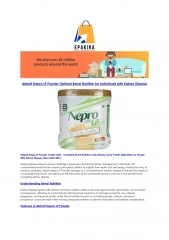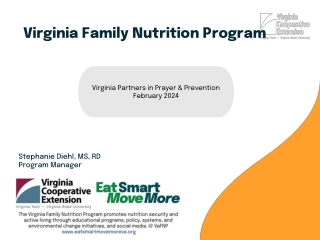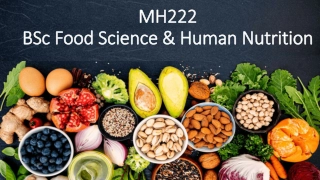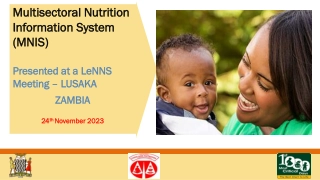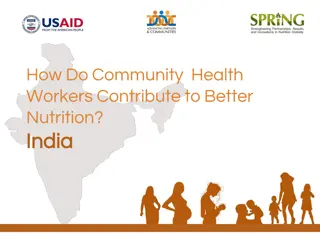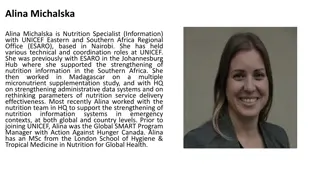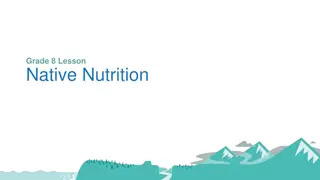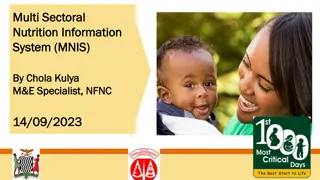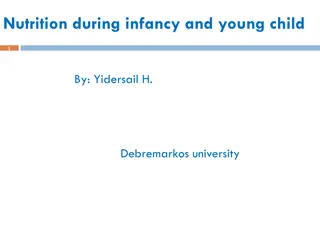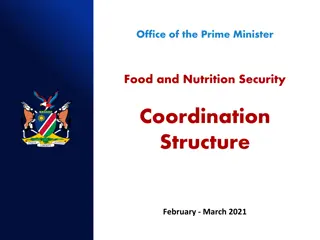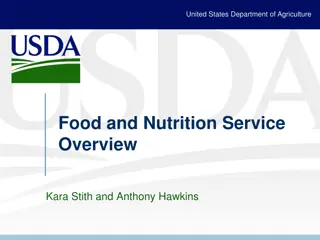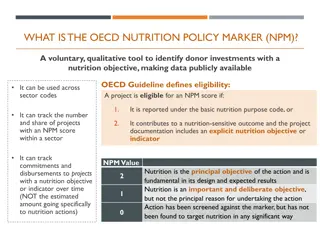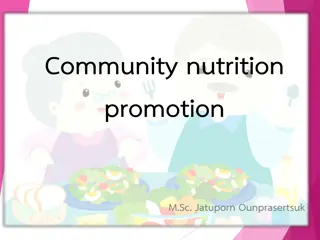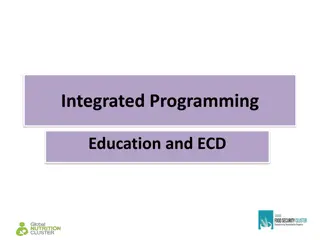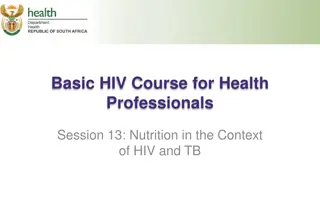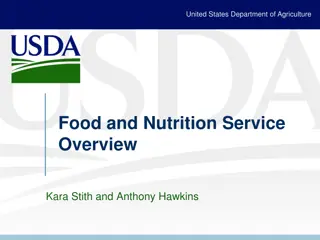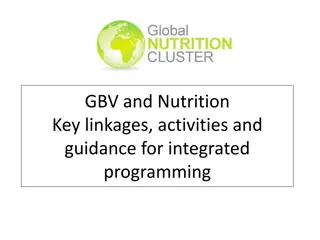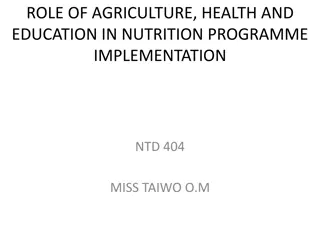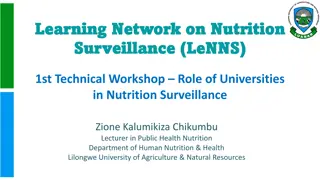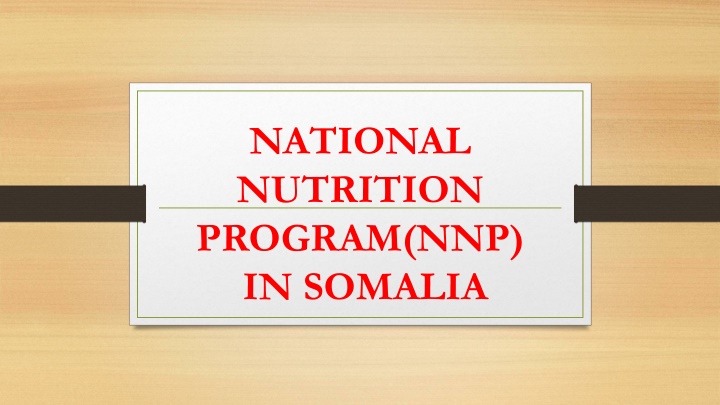
Nutrition Program in Somalia: Addressing Malnutrition Challenges
"Learn about the National Nutrition Program in Somalia emphasizing the importance of good nutrition, tackling undernutrition issues, and setting objectives to improve the health and well-being of children, women, and adolescents. Discover the strategies implemented to combat malnutrition and enhance the nutritional status of the population, with a focus on reducing protein-energy malnutrition, anemia, and iodine deficiency. Explore the holistic approach towards achieving better nutrition outcomes and promoting overall development in Somalia."
Download Presentation

Please find below an Image/Link to download the presentation.
The content on the website is provided AS IS for your information and personal use only. It may not be sold, licensed, or shared on other websites without obtaining consent from the author. If you encounter any issues during the download, it is possible that the publisher has removed the file from their server.
You are allowed to download the files provided on this website for personal or commercial use, subject to the condition that they are used lawfully. All files are the property of their respective owners.
The content on the website is provided AS IS for your information and personal use only. It may not be sold, licensed, or shared on other websites without obtaining consent from the author.
E N D
Presentation Transcript
NATIONAL NUTRITION PROGRAM(NNP) IN SOMALIA
Program: MPH Course title: Community Nutrition Topic: National Nutrition Program in Somalia Lecturer: Dr. Salamat Khandker Group Name 1. Abdishakuur Osman Abdilahi -181-41-746 2. Abdijabar Abdilahi Farah -173-41-704 2
NATIONAL NUTRITION PROGRAM(NNP) IN SOMALIA INTRODUCTION Good nutrition is one of the key foundations for the development of a healthy, productive population. Well nourished people are less likely to become ill or die, and are more productive and better able to learn. Achieving good nutrition, particularly among women and children, is associated with important short and long term health, educational and economic benefits.
Cont. Situational analysis of data from Somalia over the last decade indicates that undernutrition is a significant and enduring public health problem and a major factor in the failure to meet MDGs on hunger, child health, maternal mortality, gender equality and education. Rates of acute and chronic malnutrition have remained persistently high throughout Somaliland, Puntland and South Central Somalia, with some variation by zone and livelihood system. The causes of malnutrition are multifactorial which include lack of exclusive breastfeeding ,inappropriate complementary feeding, lack of personal hygiene and recurrent infection etc.
Objectives of NNP To reduce the prevalence of malnutrition among the people of Somalia with especial emphasis on the children, women, and adolescents To increase nutrition statuses of under 5 years and household income by integrating livelihoods and nutrition activities To reduce severe protein-Energy Malnutrition (PEM) of children To reduce moderate Protein-Energy Malnutrition (PEM) of children To increase weight gain during pregnancy of pregnant women To reduce the incidence of low birth weight
Cont. To reduce the prevalence of anemia among adolescent girls & pregnant women To sustain the prevalence of night blindness among children aged 1-5 years To reduce the prevalence of Iodine Deficiency Disorder Goal To improve nutrition status of women & children so that malnutrition is no longer a public health problem. The overall development goal of this strategy is to contribute to improved survival and development of Somali people through enhanced nutritional status.
The Nutrition Programme The Nutrition situation in Somalia over the years has continued to deteriorate mainly due to seasonal failures, poor food production and poor dietary diversity; low incomes, outbreak of diseases (AWD, Cholera, Whooping cough, malaria etc) and limited access to basic services especially health and sanitation services. International organization and Government of Somalia, especially department of Nutrition programmes targets children under five and pregnant and lactating women of vulnerable communities who are most susceptible to Nutrition, health and protection problems. The Nutrition Programme includes these services
1. SFP (Supplementary Feeding Programme) Services This service is offered to moderately malnourished children under five and pregnant and lactating women. The services include; screening of children under five and pregnant and lactating women for moderate malnutrition. Those found malnourished are admitted to the SFP programme. Within the SFP program, the moderately malnourished receive Ready-to-Use- Supplementary- Foods (RUSFs)in form of a Plumpy Sup, Plumpy Doz or a High energy biscuit, which provides the necessary nutrients to treat the Nutrition deficiencies.
RUSFs are well suited to meet the nutritional needs of young and moderate malnourished children .
Cont. These RUFs is given to the moderately malnourished on a weekly basis with weekly/monthly follow ups on the development of the beneficiaries. It is also particularly adapted to children that exit therapeutic nutrition programmes, as a means of preventing emergence of severe malnutrition. On other instances, Fortified Blended Foods (FBFs) are provided to prevent and address nutrition deficiencies and are designed to provide protein supplements. The most common FBF is the Corn Soya Blend (CSB) which is mixed with water and cooked as porridge.
cont. This is distributed on a monthly basis and follow ups are done monthly. Other services provided at the SFP include Deworming for children, Immunization and Micronutrient supplementation. Also referrals are done of the SFP beneficiaries in case of medical complications.
2. OTP (Out-Patient Therapeutic Programme) Services This service is offered to severely malnourished (SAM) children under five. The services offered include: Screening the children under five for SAM. Those found to be severely malnourished are admitted to the OTP programme. Within the OTP programme, severely malnourished children receive Ready- to-Use-Therapeutic- Food (RUTF) in form of a Plumpy Nut to treat severe malnutrition. For severe complicated malnutrition, beneficiaries are referred to a stabilization centres where they are admitted and started on a special diet of F75 therapeutic formula milk.
Cont. Once discharged form the OTP program they are referred to the SFP program where they continue to receive RUSFs to prevent a relapse of severe malnourishment. Follow ups are done on the beneficiaries form the OTP programme until they are discharges from the SFP programme.
3. Advocacy International organization and Government of Somalia, especially department of Nutrition programmes conducts general advocacy campaigns on Nutrition and its related complications of health and sanitation to the community, pregnant and lactating women, and Nutrition and community health workers. Campaign messages are mainly on Hygiene and Sanitation, Infant Young Child Feeding (IYCF), Integrated Management of Acute Malnutrition (IMAM) and; a general awareness on malnutrition and the importance of Health facilities.
4. Community-Based Therapeutic Care(CTC) Ministry of Health in Somalia , in partnership with UNICEF, operates a health and nutrition network across Mogadishu City; treating severely malnourished children under 5 years of age, providing counselling and micro-nutrient supplementation to pregnant and lactating women, immunization services, TB treatment, and hygiene promotion. The CTC Programme includes 135 outreach workers that conduct active case finding, follow up and deliver key health, hygiene, and nutrition messages on a daily basis across 9 districts of the city.
National Micronutrient and Anthropometric Nutrition Survey Micronutrient Status Somalia is in a chronic nutrition crisis with rates of acute and chronic malnutrition consistently exceeding emergency thresholds in some areas over prolonged periods. High rates of morbidity are thought to be the major driving force behind these persistently high rates of malnutrition. The situation is facilitated by low immunization coverage rates and exacerbated by periods of food shortage, and limited basic social services. Anecdotal evidence has identified cases of anaemia, vitamin A deficiency and iodine deficiency at community level however the availability of prevalence data to determine the public health significance of the main micronutrient deficiency disorders in Somalia is sadly lacking.
Cont. The only available information on micronutrient deficiencies is on anaemia in children 6- 59 months from Somaliland in 2001, where a study conducted by UNICEF and the Ministry of Health and Labour (MoHL) identified 59.5% of children as anaemic, from a sample of 784 children drawn from 30 clusters and tested using the HemoCue (18.3% mild anaemia, 33.2% moderate anaemia and 8% severe anaemia). In the 2006 MICS, UNICEF identified that only 1.2% of households were using iodised salt nationally, and there was only 24% coverage of Vitamin A capsule distribution in children under-five years.10 This information, though limited, highlights the elevated risks of vitamin A, iodine and iron deficiency in Somalia.
Nutrition interventions Due to inadequate governance structures in parts of Somalia, nutrition response programming is mainly undertaken by UN, international and national NGOs. Nutrition interventions are primarily focussed on responding to alarming rates of acute malnutrition throughout the country. Food security and nutrition surveillance and early warning reports (FSNAU, FEWSNET, WFP) are key activities providing quality information and analysis for the targeting of appropriate and timely responses to changing needs in country
Cont. Outpatient therapeutic feeding programmes (OTPs) for the management of severe acute malnutrition are being implemented across Somalia by international NGOs and UNICEF in partnership with local NGOs.
Cont. WFP is providing food assistance to vulnerable groups through institutional feeding and school feeding to around 90,000 beneficiaries. WFP also provides a general food ration consisting of cereals, CSB, sugar, fortified oil and iodised salt when available, to the rural population affected by the humanitarian crisis, the urban poor and IDPs. Nutrition interventions delivered through health campaigns include vitamin A distribution, deworming and nutritional screening during bi annual Child Health Days.
Somalia's Micronutrient Status Somalia is in a chronic nutrition crisis with rates of acute and chronic malnutrition consistently exceeding emergency thresholds in some areas over prolonged periods. High rates of morbidity are thought to be the major driving force behind these persistently high rates of malnutrition. The major micronutrients deficiency problems affecting Somalia are Vitamin A, Iron, Zinc and iodine according to a survey to assess the Micronutrient deficiency problems affecting Somalia.
Cont. The situation is facilitated by low immunization coverage rates and exacerbated by periods of food shortage, and limited basic social services. Anecdotal evidence has identified cases of anaemia, vitamin A deficiency and iodine deficiency at community level however the availability of prevalence data to determine the public health significance of the main micronutrient deficiency disorders in Somalia is sadly lacking.
Recommendations 1. A Micronutrient Task force for Somalia should be developed to provide guidance and coordination on implementation of the suggested guidelines. 2. All the recommendations discussed should be linked with the overall nutrition strategy being developed for Somalia. 3. Partnerships with global micronutrient initiatives and other relevant global institutions need to be encouraged for exposure to experiences in other similar contexts and to support the mobilization of appropriate resources for Somalia.

